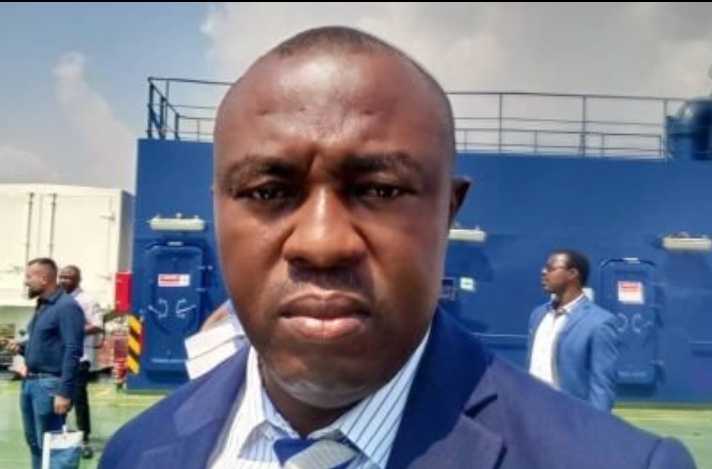The recurring boat accidents, particularly in the Northern, which claim several lives each month, have once again highlighted the pressing need for more coordinated safety measures on the inland waterways, beyond the mere distribution of life jackets, ADAKU ONYENUCHEYA reports.
In June 2024, the Federal Ministry of Marine and Blue Economy unveiled the Inland Waterways Transport Code to regulate passenger conduct, guide boat operators, enhance safety, curb boat mishaps and create a framework to attract investment in water transportation.
The code outlines strict safety requirements, including enforcement of passenger limits, restrictions on night travel, mandatory use of life jackets by all passengers and crew, vessel registration and periodic safety inspections, licensing of boat operators and compulsory safety briefings before departure. It also prescribes sanctions and fines for violators.
Nigeria has an estimated 10,000 kilometres of waterways, with more than 3,000 kilometres navigable, providing access to 28 of the country’s 36 states. However, despite the introduction of the water transport code, frequent mishaps leading to loss of lives have continued.
In August alone, three boat accidents in Sokoto state sparked renewed concerns over the Federal Government’s handling of waterway safety. On August 29, at the Jaranja River in Shagari Local Government Area, two persons died, while nine others were rescued with injuries.
A week earlier, on August 22, six people lost their lives, 19 were rescued, and three were declared missing after a boat capsized at Faji community in Sabon Birni Local Government Area.
On August 17, four people died in a similar incident at Kojiyo village in Goronyo Local Government Area, where 41 passengers were rescued and five others went missing.
The incidents mirror similar tragedies that occurred in the previous year. In August 2024, at least 16 farmers died in Sokoto when a wooden canoe carrying them to their rice fields capsized.
The spate of tragedies extends beyond Sokoto. In August 2025, 15 villagers died in a boat mishap in the Gummi Local Council of Zamfara state, with three others still missing.
Just weeks earlier, on July 27, at least 13 people were killed in a boat accident in Niger state. Two days later, on July 29, six young girls drowned in Jigawa State when their boat overturned while returning from farm work.
According to the National Emergency Management Agency (NEMA) and the National Inland Waterways Authority (NIWA), the accidents were largely caused by carelessness, negligence, overloading, poorly maintained vessels and violations of safety rules.
The recurring accidents underscore the gap between policy and enforcement, particularly in the North, where inland waterways remain the primary mode of transportation for many rural communities.
Rising challenges
While commiserating with the victims and families of the recent boat accidents in Sokoto, the Minister of Marine and Blue Economy, Adegboyega Oyetola, described the recurring loss of lives on the nation’s waterways as both painful and avoidable. Oyetola highlighted wooden boats as a key factor in the mishaps, noting that their structural weaknesses make them unsafe for modern commercial operations.
He explained that wooden boats cannot withstand the scale of haulage they are now subjected to, especially when overloaded, making them increasingly prone to accidents.
“The time has come for a decisive break from outdated practices. Wooden boats have served their time, but they cannot be the future of water transport in Nigeria. The tragic mishaps we continue to witness are a direct consequence of the continued reliance on unsafe vessels. We must now chart a safer course for our people,” Oyetola declared.
The minister called for the phasing out of wooden boats, appealing to state governments to invest urgently in modern, non-wooden vessels for commercial operations. He emphasised that fibre and aluminium boats, being sturdier, safer and more durable, represent the global standard for inland and coastal waterway transport.
However, this approach has met pushback from industry experts, who argue that wooden boats have been the primary mode of transport in rural areas for centuries, with fewer accidents in the past.
Experts warned that a blanket phase-out may not be feasible, particularly given the economic constraints faced by rural boat owners Instead, they proposed safety-enhanced wooden boats as a practical alternative. This, they said, would involve designing and constructing vessels that meet modern safety standards, including stability, buoyancy, and durability.
Experts also highlighted human factors contributing to accidents, including overloading, non-adherence to safety protocols, poor boat maintenance, improper use of life jackets, overspeeding, drunk operation, unqualified or underage boat captains, and night travel.
Although the ministry has distributed 3,500 life jackets to each riverine state, incidents of boat mishaps have continued. Both operators and passengers are frequently caught flouting safety protocols outlined in the Inland Waterways Transport Code, despite sanctions and penalties.
Experts argue that operationalising and institutionalising safety measures through a comprehensive approach, including proactive interventions, is essential to building a robust safety framework and improving compliance to reduce accidents.
“Our ministry has mandated the compulsory use of life jackets and supplied them in thousands to riverine states. But life jackets alone cannot guarantee safety without safe boats. This is the seed we must sow today to secure a safer, more prosperous tomorrow,” the minister stated.
For safer waterways
Industry experts also warn that non-enforcement of existing laws will continue to make waterway transportation unsafe, discouraging both users and potential investors.
The lack of enforcement will, in addition, hamper growth in the maritime tourism industry, valued at over $6.45 trillion. However, industry specialists have suggested actionable measures to eliminate boat mishaps on the nation’s waterways.
They stressed the importance of a proactive approach to safety, rather than relying solely on reactive measures such as mandatory life jackets and enforcement after accidents occur.
Among the measures recommended are the implementation of a mandatory boat passenger manifest scheme to monitor and control passenger loads, the creation of impoundment centres for vessels that fail to comply with safety regulations as a deterrent to negligent operators, and the enforcement of strict management protocols at loading points to prevent overloading.
Experts also called for regular inspections and audits to identify potential safety risks, alongside training and certification programmes for boat operators to enhance their skills in safety procedures, emergency response, and navigation.
Other recommendations include strengthening emergency response teams and preparing for peak boating periods to manage increased traffic and passenger volumes.
Given the economic realities of rural operators, deploying safety-enhanced wooden boats was suggested as a practical alternative. Experts further emphasised the importance of institutionalised safety awareness campaigns to foster a culture of safety and secure buy-in from all stakeholders, as well as clearly defining roles and responsibilities, particularly for regulatory authorities and boat operators, to ensure collaboration in maintaining safe navigation channels, terminals, and vessels.
Effective boat surveying and registration systems were also highlighted as essential to ensure compliance with safety standards. According to industry experts, institutionalising these safety measures through daily operational schemes can have numerous benefits.
These include identifying and mitigating potential risks, significantly reducing accidents, promoting a safety culture among operators and passengers, enhancing compliance with regulations, and improving efficiency to lower the economic costs associated with accidents and emergencies.
The Dean of the Faculty at City University, Cambodia, Prof. Alfred Oniye, outlined a series of actionable measures to address the persistent safety challenges on the inland waterways, stressing the need for stronger compliance with the code.
Oniye emphasised regular review of the effectiveness of the enforcement strategies and making necessary adjustments based on feedback and observed challenges, while also ensuring regular and intensive training sessions for marshals, which are critical to equipping them with the skills and knowledge required for effective enforcement.
According to him, training should also cover the proper handling of penalties and professional approaches to cases of non-compliance. He further recommended the deployment of more patrol boats and the introduction of round-the-clock monitoring in critical areas, noting that constant surveillance would help detect and deter violations promptly.
To complement this, he urged the launch of widespread sensitisation campaigns targeting boat operators and passengers, highlighting the importance of compliance for safety and the dire consequences of violations.
The professor also advocated for stronger partnerships with local governments, community leaders, and other stakeholders to secure grassroots support for enforcement.
He called for the adoption of modern technology, including Global Positioning System (GPS) tracking for boats and digital reporting systems for marshals, to monitor activities and report violations in real time.
In addition, Oniye stressed that penalties for violations must not only be severe but also swiftly enforced.
These, he said, could range from fines and suspension of licenses to legal action for repeat offenders. The Managing Director of Harsecom Logistics Limited and Secretary General of the Association of Bonded Terminal Operators of Nigeria (ABTON), Haruna Omolajomo, called for urgent reforms and stricter enforcement of safety regulations on inland waterways to reduce accidents and safeguard lives.
Omolajomo noted that while Nigeria boasts over 10,000 kilometres of navigable inland waterways, weak enforcement of safety rules has continued to expose passengers and operators to avoidable risks.
He said the National Inland Waterways Authority (NIWA) recruitment of marshals and the imposition of fines on violators remain insufficient, noting that there is a need to employ more marshals and involve state governments as partners in enforcement to make patrolling more effective.
“Employing 350 marshals to monitor 10,000 kilometres of waterways is grossly inadequate. This means one marshal is expected to cover about 28.5 kilometres, which is simply unrealistic,” Omolajomo said. He urged the Federal Government to review the long-overdue NIWA Act to accommodate state participation in the regulation and control of waterways.
According to him, at least 20 to 30 states would benefit from such collaborative enforcement, making it easier to address local challenges while ensuring uniform safety standards nationwide.
Omolajomo also recommended the creation of an intelligence unit within NIWA, similar to the Customs Intelligence Unit, to monitor and report on the activities of personnel and operators to curb corruption and compromise. He further called for the mandatory registration of all boat operators with NIWA, strict enforcement of operating hours between 6 a.m. and 6 p.m. with actionable penalties for defaulters.
Omolajomo also stressed the need for intoxicated or drug-impaired boat operators to be handed over to the National Drug Law Enforcement Agency (NDLEA) for prosecution, while advocating for the development of a Safety Operations Procedure (SOP) document for all boat operators.
“The issue is not just about creating laws but about strict enforcement. We must not compromise standards if we truly want to prevent unnecessary accidents and deaths on our inland waterways,” Omolajomo emphasised.
On his part, the Chairman and Chief Consultant of Global Transport Policy, Dr Oluwasegun Musa, emphasised enhancing navigational apparatus within coastal and inland waterways to prevent accidents as well as deploying ambulances and rapid response units along major waterways for swift intervention during accidents.
Musa also suggested affordable safety equipment, such as introducing government incentives to reduce the cost of life jackets and other essential safety tools, making them accessible to boat operators and passengers. He further stressed implementing mandatory training programmes for water transport operators and passengers to reinforce safety protocols.






